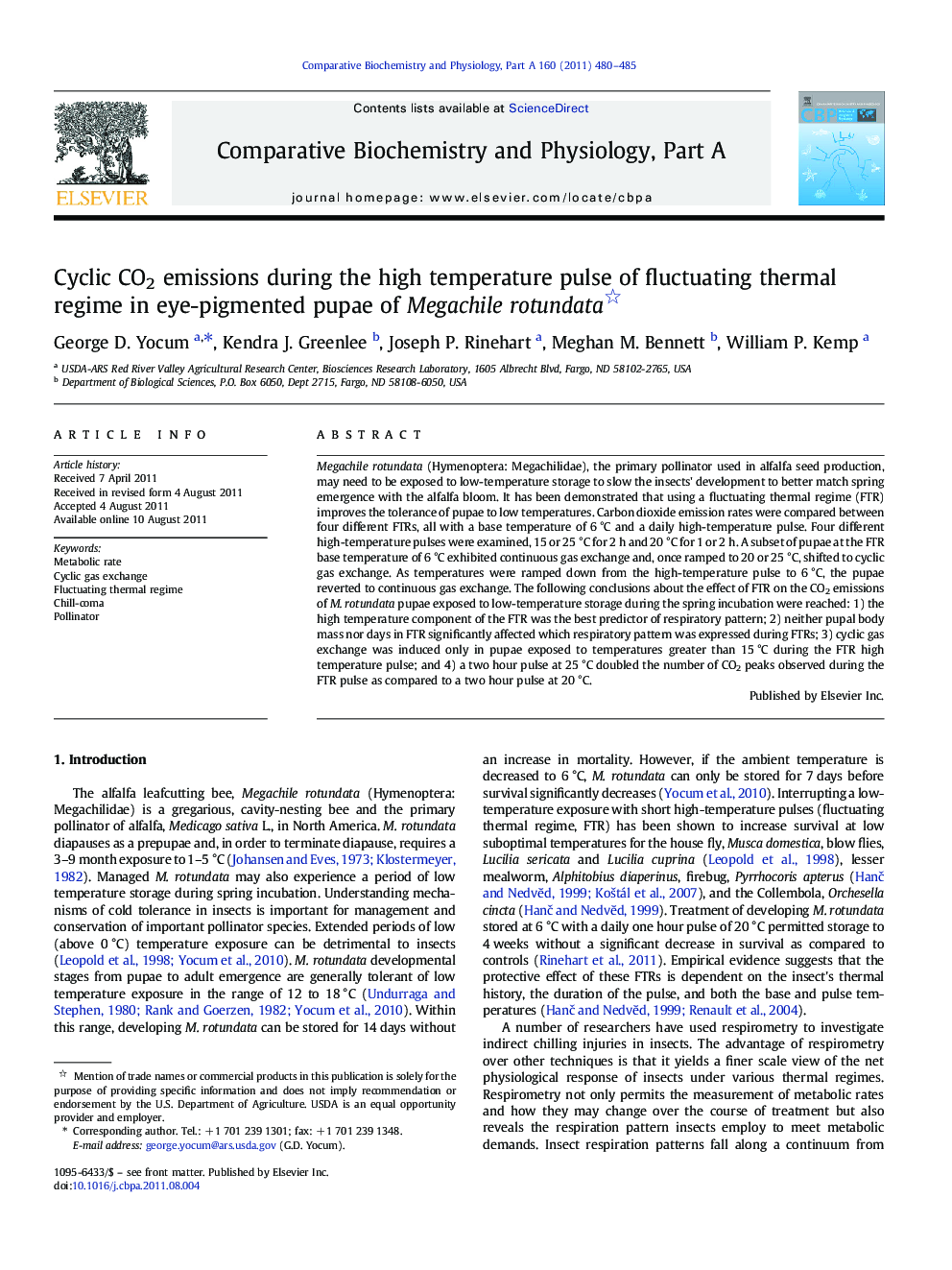| Article ID | Journal | Published Year | Pages | File Type |
|---|---|---|---|---|
| 8318736 | Comparative Biochemistry and Physiology Part A: Molecular & Integrative Physiology | 2011 | 6 Pages |
Abstract
Megachile rotundata (Hymenoptera: Megachilidae), the primary pollinator used in alfalfa seed production, may need to be exposed to low-temperature storage to slow the insects' development to better match spring emergence with the alfalfa bloom. It has been demonstrated that using a fluctuating thermal regime (FTR) improves the tolerance of pupae to low temperatures. Carbon dioxide emission rates were compared between four different FTRs, all with a base temperature of 6 °C and a daily high-temperature pulse. Four different high-temperature pulses were examined, 15 or 25 °C for 2 h and 20 °C for 1 or 2 h. A subset of pupae at the FTR base temperature of 6 °C exhibited continuous gas exchange and, once ramped to 20 or 25 °C, shifted to cyclic gas exchange. As temperatures were ramped down from the high-temperature pulse to 6 °C, the pupae reverted to continuous gas exchange. The following conclusions about the effect of FTR on the CO2 emissions of M. rotundata pupae exposed to low-temperature storage during the spring incubation were reached: 1) the high temperature component of the FTR was the best predictor of respiratory pattern; 2) neither pupal body mass nor days in FTR significantly affected which respiratory pattern was expressed during FTRs; 3) cyclic gas exchange was induced only in pupae exposed to temperatures greater than 15 °C during the FTR high temperature pulse; and 4) a two hour pulse at 25 °C doubled the number of CO2 peaks observed during the FTR pulse as compared to a two hour pulse at 20 °C.
Related Topics
Life Sciences
Biochemistry, Genetics and Molecular Biology
Biochemistry
Authors
George D. Yocum, Kendra J. Greenlee, Joseph P. Rinehart, Meghan M. Bennett, William P. Kemp,
